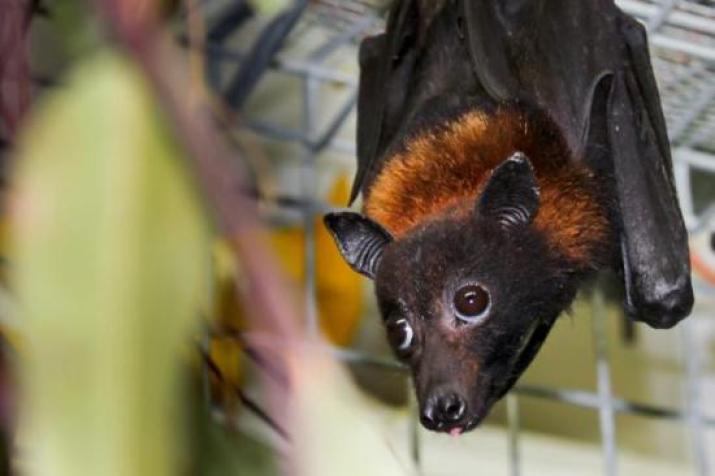By Duke-NUS
An international team led by an infectious disease expert, Professor Lin-Fa Wang, at the Duke-NUS Graduate Medical School (Duke-NUS) in Singapore has found that the evolution of flight in bats may have contributed to the development of a highly effective immune system, allowing bats to harbor some of the world’s deadliest viruses such as Ebola and SARS.
In their study, published in the prestigious international journal Science, Professor Wang and colleagues used a state-of-the-art whole-genome sequencing technique to analyze the genomes of two distantly-related bat species, the fruit bat Pteropus alecto (Black flying fox, a species native to Australia, Papua New Guinea, and Indonesia) and the insect-eating bat Myotis davidii (David’s mouse-eared bat, a species endemic in China).
“This is the first in-depth study of bat genomes. Our study provided important genomics insights into the unique biological features of bats,” said Professor Wang, an expert in bat-borne viruses who was appointed Director of the Program in Emerging Infectious Diseases at Duke-NUS in July this year.
The large collaborative team from China, Denmark, Australia, U.S., and Singapore compared the two bat genomes with the genomes of other mammals, and found genetic clues that may account for the unique characteristics of bats.
Although bats are the second largest group of mammals, with over 1,000 species of bats documented so far, they are distinctive because they are the only mammals capable of sustained flight; other mammals such as flying squirrels glide but do not fly.
Previous research has shown that this ability to fly may be linked to high metabolic rates in bats. However, increased metabolism also elevates the amount of free radicals in living cells, resulting in DNA damage that is harmful to the bats.
Through their analysis of bat genomes, the researchers have now solved the mystery of how bats tolerate high levels of free radicals. It appears that bats have evolved mechanisms to overcome this toxic side-effect of flying, as they possess gene variants that help them minimize and repair DNA damage.
And here is where bats’ ability to fly and their immunity against viruses intersect: the same gene variants that minimize DNA damage in bats may also provide protection against viruses, boosting their innate immune system to ward off such attacks.
Having a highly active immune system may explain why bats are natural hosts of many viruses such as Hendra, Nipah, Ebola, and SARS, yet rarely show any signs of infection. In contrast, when these viruses are transmitted to humans or other animals, the resulting illness is often severe and even fatal.
Bats are also known for their exceptional longevity which is unusual because of their small size and high metabolic rate. The researchers raise the intriguing possibility that the same mechanisms underlying the evolution of flight and viral immunity in bats may also be responsible for their life expectancy, although further research is required to establish this link.
Professor Wang hopes that the findings from this study will provide new research directions into infectious diseases, especially in the treatment, prevention, and control of emerging infectious diseases that affect both humans and livestock animals.
“Our findings highlight the potential of using bats as a model system to study infection control, tumor biology, and the mechanisms of aging,” said Professor Wang, who intends to continue studying bat-borne viruses in Duke-NUS, tapping on Duke-NUS’ strengths in human infectious disease research for viral diseases such as dengue and influenza, and to explore new collaborative research in tumor biology with scientists in the Cancer and Stem Cell Biology Program at Duke-NUS.
Professor Wang is also a Science Leader for the CSIRO Office of the Chief Executive and Senior Principal Research Scientist at the CSIRO Australian Animal Health Laboratory (AAHL) in Geelong, Australia.
See the original story on the Duke-NUS website.



